Showing Spotlights 1369 - 1376 of 2784 in category All (newest first):
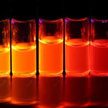 Quantum dots are expected to deliver lower cost, higher energy efficiency and greater wavelength control for a wide range of products, including lamps, displays and photovoltaics. Unfortunately, the toxicity of the elements used for efficient quantum dot based LEDs is a severe drawback for many applications. Therefore, light-emitting devices which are based on the non-toxic element silicon are extraordinary promising candidates for future QD-lighting applications. Researchers have now demonstrated highly efficient and widely color-tunable silicon light-emitting diodes (SiLEDs). The emission wavelength of the devices can easily be tuned from the deep red (680 nm) down to the orange/yellow (625 nm) spectral region by simply changing the size of the used size-separated silicon nanocrystals.
Quantum dots are expected to deliver lower cost, higher energy efficiency and greater wavelength control for a wide range of products, including lamps, displays and photovoltaics. Unfortunately, the toxicity of the elements used for efficient quantum dot based LEDs is a severe drawback for many applications. Therefore, light-emitting devices which are based on the non-toxic element silicon are extraordinary promising candidates for future QD-lighting applications. Researchers have now demonstrated highly efficient and widely color-tunable silicon light-emitting diodes (SiLEDs). The emission wavelength of the devices can easily be tuned from the deep red (680 nm) down to the orange/yellow (625 nm) spectral region by simply changing the size of the used size-separated silicon nanocrystals.
Feb 8th, 2013
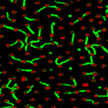 DNA is a powerful biomaterial for creating rationally designed and functionally enhanced nanostructures. Emerging DNA nanotechnology employs DNA as a programmable building material for self-assembled, nanoscale structures. Researchers have also shown that DNA nanotechnology can be integrated with traditional silicon processing. DNA nanoarchitectures positioned at substrate interfaces can offer unique advantages leading to improved surface properties relevant to biosensing (for instance, graphene and DNA can combine to create a stable and accurate biosensor), nanotechnology, materials science, and cell biology.
DNA is a powerful biomaterial for creating rationally designed and functionally enhanced nanostructures. Emerging DNA nanotechnology employs DNA as a programmable building material for self-assembled, nanoscale structures. Researchers have also shown that DNA nanotechnology can be integrated with traditional silicon processing. DNA nanoarchitectures positioned at substrate interfaces can offer unique advantages leading to improved surface properties relevant to biosensing (for instance, graphene and DNA can combine to create a stable and accurate biosensor), nanotechnology, materials science, and cell biology.
Feb 7th, 2013
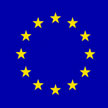 The code of conduct for responsible nanosciences and nanotechnologies research (code of conduct) is the Annex to the first nanotechnology-specific legal measure by the EU (2008), a Commission recommendation that is legally nonbinding. The nanotechnologies code of conduct contains principles and guidelines for integrated, safe and responsible (ethical) nanosciences and nanotechnologies research. The central control mechanisms are research prioritisation, technology assessment, ethical and fundamental law clauses/restrictions, defensibility checks and accountability.
The code of conduct for responsible nanosciences and nanotechnologies research (code of conduct) is the Annex to the first nanotechnology-specific legal measure by the EU (2008), a Commission recommendation that is legally nonbinding. The nanotechnologies code of conduct contains principles and guidelines for integrated, safe and responsible (ethical) nanosciences and nanotechnologies research. The central control mechanisms are research prioritisation, technology assessment, ethical and fundamental law clauses/restrictions, defensibility checks and accountability.
Feb 5th, 2013
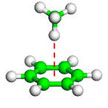 Graphene has the potential to revolutionize many fields, especially in electronics to replace the currently used silicon materials. However, graphene does have an Achilles heel: pristine graphene is semi-metallic and lacks the necessary band gap to sever as a transistor. At present, a big challenge for graphene science is how to open a considerable band gap for graphene without significantly degrading its carrier mobility. New theoretical results suggest a rather practical solution for gap opening of graphene and silicene while preserving the desired high carrier mobility, which would allow them to serve as field effect transistors and other nanodevices.
Graphene has the potential to revolutionize many fields, especially in electronics to replace the currently used silicon materials. However, graphene does have an Achilles heel: pristine graphene is semi-metallic and lacks the necessary band gap to sever as a transistor. At present, a big challenge for graphene science is how to open a considerable band gap for graphene without significantly degrading its carrier mobility. New theoretical results suggest a rather practical solution for gap opening of graphene and silicene while preserving the desired high carrier mobility, which would allow them to serve as field effect transistors and other nanodevices.
Feb 1st, 2013
 A key benefit of nanoimprint lithography is its sheer simplicity. There is no need for complex optics or high-energy radiation sources with a nanoimprint tool. Especially the nanopatterning of high refractive index optical films promises the development of novel photonic nanodevices such as planar waveguide circuits, nano-lasers, solar cells and antireflective coatings. Researchers have now developed a robust route for high-throughput, high-performance nanophotonics based direct imprint of high refractive index, low visible wavelength absorption materials.
A key benefit of nanoimprint lithography is its sheer simplicity. There is no need for complex optics or high-energy radiation sources with a nanoimprint tool. Especially the nanopatterning of high refractive index optical films promises the development of novel photonic nanodevices such as planar waveguide circuits, nano-lasers, solar cells and antireflective coatings. Researchers have now developed a robust route for high-throughput, high-performance nanophotonics based direct imprint of high refractive index, low visible wavelength absorption materials.
Jan 29th, 2013
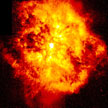 Trace detection of explosives generally involves the collection of vapour or particulate samples and analyzing them using a sensitive sensor system. Various factors, such as wide variety of compounds that can be used as explosives, the vast number of deployment means and the lack of inexpensive sensors providing both high sensitivity and selectivity have made trace detection a very complex and costly task. High sensitivity and selectivity, along with the availability of low-cost sensors, is essential to combat explosives-based terrorism. Nanosensors have the potential to satisfy all the requirements for an effective platform for the trace detection of explosives.
Trace detection of explosives generally involves the collection of vapour or particulate samples and analyzing them using a sensitive sensor system. Various factors, such as wide variety of compounds that can be used as explosives, the vast number of deployment means and the lack of inexpensive sensors providing both high sensitivity and selectivity have made trace detection a very complex and costly task. High sensitivity and selectivity, along with the availability of low-cost sensors, is essential to combat explosives-based terrorism. Nanosensors have the potential to satisfy all the requirements for an effective platform for the trace detection of explosives.
Jan 28th, 2013
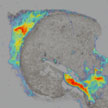 Currently, optically absorbing nanoparticles are breaking into clinical medicine because of their ability to aid in the identification of disease with several medical imaging modalities. These nanoparticles are also used in therapeutics by triggering drug release or enhancing ablation of diseased tissues, while minimizing damage to healthy tissues. The efficiency and effectiveness of the medical imaging and therapeutics using nanoparticles depends on the ability to selectively target them to the specific tissues. A novel method only uses properties of the nanoparticles and therefore are independent of the amount of nanoparticles that reaches the target location.
Currently, optically absorbing nanoparticles are breaking into clinical medicine because of their ability to aid in the identification of disease with several medical imaging modalities. These nanoparticles are also used in therapeutics by triggering drug release or enhancing ablation of diseased tissues, while minimizing damage to healthy tissues. The efficiency and effectiveness of the medical imaging and therapeutics using nanoparticles depends on the ability to selectively target them to the specific tissues. A novel method only uses properties of the nanoparticles and therefore are independent of the amount of nanoparticles that reaches the target location.
Jan 25th, 2013
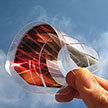 Many researchers are investigating the development of flexible solar cells in hopes of improving efficiency and lowering manufacturing costs. As an important member of the organic photovoltaics family, polymer solar cells draw the most research interest, due to the relatively high power conversion efficiency achieved. However, compared to the high efficiencies of inorganic solar cells, the best polymer solar cells still show a lower efficiency. Improved nanomorphology is seen as key to improving the efficiency of organic solar cells. One particular nanotechnology approach would use nanoimprint lithography to produce precisely nanostructured devices rather than using chemical methods of manufacturing.
Many researchers are investigating the development of flexible solar cells in hopes of improving efficiency and lowering manufacturing costs. As an important member of the organic photovoltaics family, polymer solar cells draw the most research interest, due to the relatively high power conversion efficiency achieved. However, compared to the high efficiencies of inorganic solar cells, the best polymer solar cells still show a lower efficiency. Improved nanomorphology is seen as key to improving the efficiency of organic solar cells. One particular nanotechnology approach would use nanoimprint lithography to produce precisely nanostructured devices rather than using chemical methods of manufacturing.
Jan 24th, 2013
 Quantum dots are expected to deliver lower cost, higher energy efficiency and greater wavelength control for a wide range of products, including lamps, displays and photovoltaics. Unfortunately, the toxicity of the elements used for efficient quantum dot based LEDs is a severe drawback for many applications. Therefore, light-emitting devices which are based on the non-toxic element silicon are extraordinary promising candidates for future QD-lighting applications. Researchers have now demonstrated highly efficient and widely color-tunable silicon light-emitting diodes (SiLEDs). The emission wavelength of the devices can easily be tuned from the deep red (680 nm) down to the orange/yellow (625 nm) spectral region by simply changing the size of the used size-separated silicon nanocrystals.
Quantum dots are expected to deliver lower cost, higher energy efficiency and greater wavelength control for a wide range of products, including lamps, displays and photovoltaics. Unfortunately, the toxicity of the elements used for efficient quantum dot based LEDs is a severe drawback for many applications. Therefore, light-emitting devices which are based on the non-toxic element silicon are extraordinary promising candidates for future QD-lighting applications. Researchers have now demonstrated highly efficient and widely color-tunable silicon light-emitting diodes (SiLEDs). The emission wavelength of the devices can easily be tuned from the deep red (680 nm) down to the orange/yellow (625 nm) spectral region by simply changing the size of the used size-separated silicon nanocrystals.
 Subscribe to our Nanotechnology Spotlight feed
Subscribe to our Nanotechnology Spotlight feed





